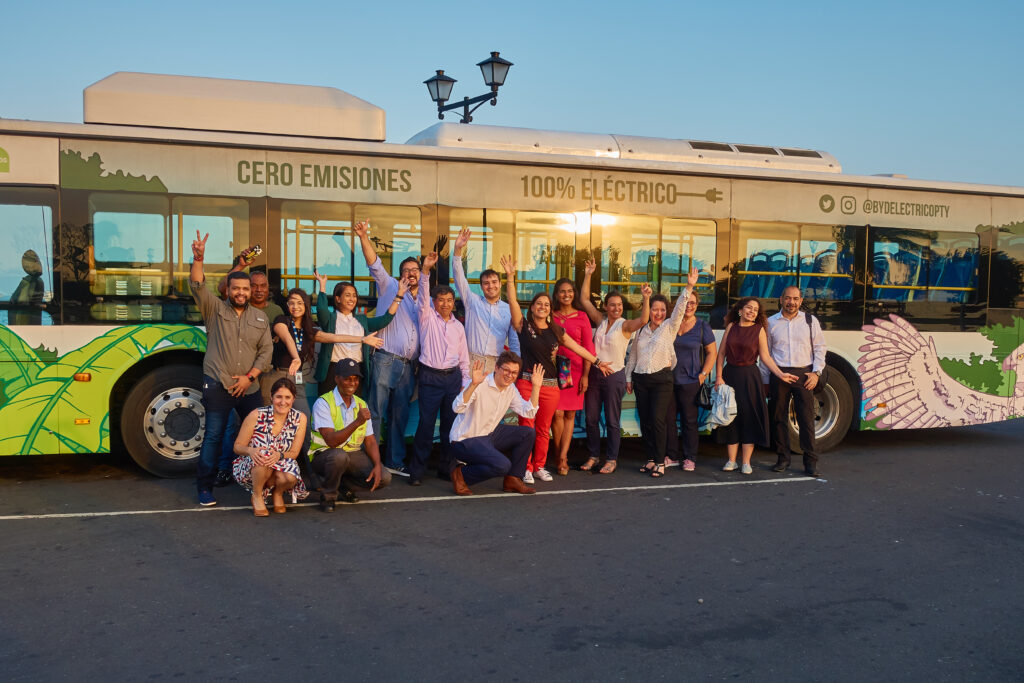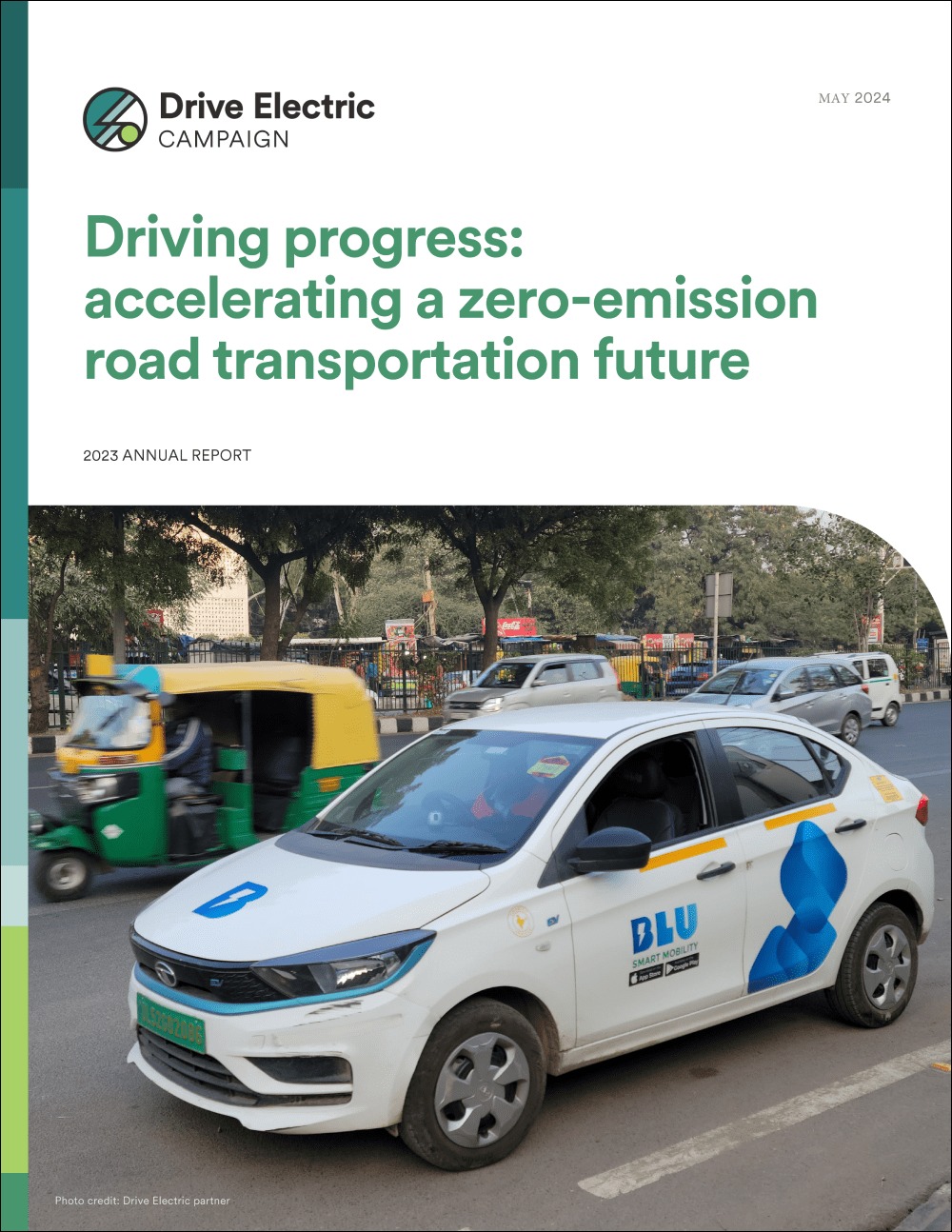Electric mobility is taking off in Latin America and the Caribbean: here’s how MOVE is helping it happen
Electric mobility is taking off in Latin America and the Caribbean: here’s how MOVE is helping it happen
Imagine a world where nobody breathes unhealthy vehicle exhaust — where electric vehicles of all types, not just cars, provide mobility for people and goods while delivering cleaner air to breathe, more affordable transportation, more jobs, and a safer climate. This is the future envisioned by the UN Environment Programme’s Movilidad eléctrica en América Latina y el Caribe (MOVE) and supported by the Drive Electric Campaign.
An electric future is not only reserved for developed nations but a reality in several Latin American and Caribbean countries and cities. In Latin America and the Caribbean, electrifying transportation has the potential to catalyze emission reductions and investments while improving the quality of life in cities. From a distance, it may seem that electric mobility has not taken off in Latin America and the Caribbean yet, but when looking closer, we discover a dynamic and fast-growing ecosystem.
Latin America and the Caribbean is one of the most urbanized regions globally, with 81% of the population living in urban centers. Consequently, most of the energy consumption and mobility needs are concentrated in urban areas. Together, transportation and the power sector are responsible for almost a quarter of the total greenhouse gas emissions in this region. On one hand, Latin America has one of the most dynamic renewable energy markets globally: more than half of its power sector (56% of the total) is based on renewables – with some countries having 100% renewable electricity systems. On the other hand, climate emissions from the transport sector continue to rise.

Electric Transportation is a Key Climate Solution in Latin America & the Caribbean
This transportation transformation is driven by governments, businesses, and citizen organizations at all levels that are moving the needle to make electric mobility a reality.
One of the pillars of this ecosystem is legislation and political will to foster electric mobility, including specific institutional arrangements to lead, coordinate and publish norms and regulations. A clear example of this is Costa Rica, which has one of the first EV laws in emerging markets and has internationally well-known political will towards full decarbonization. Chile has just announced a phase-out of the internal combustion engine by 2035 and has committed to phasing out combustion vehicles completely from their passenger transport fleet by 2030 and zero and low-emission public transport by 2022. Argentina is considering a similar bill.
It’s official, finally! 📣
Chile 🇨🇱 is the first emerging market to end sales of petrol and diesel cars!
WELL DONE to the team at the Ministry of Energy and the e-mobility commission.
Who will be next? https://t.co/LYPma4QRYN @Drive_Electric_
— Monica Araya (@MonicaArayaTica) October 18, 2021
EV Adoption is Accelerating for Fleets & Drivers
There is more encouraging news: despite the fact that battery electric vehicles are currently outnumbered 10,000:1 by combustion engines, there is a growing supply and demand for electric mobility services and products. On the demand side, in 2020, EV sales in Colombia grew more than 42% compared to the previous year (despite COVID-19 lockdowns). In terms of fleets, the region is transitioning from pilot to commercial projects. As a region, Latin America and the Caribbean stands out for its dynamic deployment of electric bus fleets and in the growing rollout of electric last-mile delivery trucks.
The Caribbean is very active too, with Barbados being an e-mobility pioneer. The 300,000 inhabitant country started operating 33 e-buses in August 2020, and has already increased to 50 and has 430 electric cars on its roads. The EV sales in 2019 make the country one of the top users of EV per capita; while the EV public chargers eliminate range anxiety, as drivers are never more than about three miles away from a charge point.
On the supply side, the region is home to leaders in many different electric vehicle categories: public transport and long-distance buses, short and medium distance freight vehicles and commercial mining vehicles, last-mile delivery vehicles, and all categories of private and micro-mobility vehicles. Brands are expanding into more and different standards of electric mobility products, from a luxury Porsche to a much more affordable Twizy, JAC, or BYD. Moreover, large automakers are starting to see the opportunity and many have announced the total shift to EVs during the next decade, which will accelerate the transition to electric mobility.
Finally, the financial and insurance sector has been vital for the electric mobility deployment we see in the region today. With innovative business and financing models, energy companies and international venture capital funds have been financing and supporting the project structuring of big urban bus fleets.
The Road from COP26 to Global Change
This year, MOVE and its partners launched “MoveToZero,” a regional campaign aligned with the #RouteZero global campaign to raise and make visible commitments related to electric mobility in the Latin America and Caribbean region in the run-up to COP26. So far, several companies and cities have submitted their pledges to MoveToZero. Bogotá, the capital and largest city in Colombia, joined the MoveToZero campaign, and as mentioned earlier, it has ambitious targets by global standards.
MOVE is also a partner of the Drive Electric Campaign — a global coalition to accelerate the transition to 100% clean electric vehicles in twenty years. With an ambitious coalition and a recently-announced boost of philanthropic support, Drive Electric partners are getting ready for the next five years to secure an acceleration of the market tipping point. One of the areas where Drive Electric can make a distinct difference is in connecting experts, promoting global practices and coordinating smart strategies to help accelerate EV adoption in pioneering countries in the developing world. MOVE is a prime example of how we can foster change regionally and across a global industry.
The good news as the region emerges from the pandemic is that faster electrification means that there will be benefits not only for transportation and the climate but also for the economy and our health. Millions of citizens will benefit from cleaner, healthier and far quieter streets.
From the authors: since its inception, MOVE has focused on advancing and keeping track of the progress of electric drive technology in the region. This means not only developing studies and generating statistics but also accompanying substantially the champions that are moving the needle to make electric mobility a reality. Nowadays, MOVE supports 15 Latin America and Caribbean countries and provides capacity building to a network of more than 2,500 practitioners in 77 countries.
